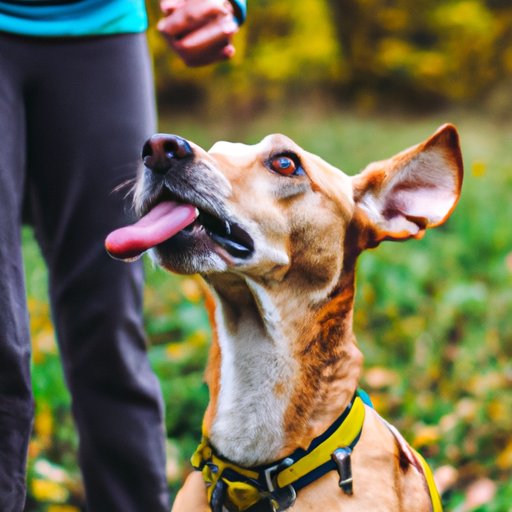
I. Introduction
Most dogs have a natural instinct to bite, whether it’s out of playfulness or as a means of self-defense. However, biting can become a serious issue if it’s not properly addressed by the owner. Not only can it be a dangerous behavior for others, but it can also become problematic for the dog who may end up being re-homed or euthanized. This article aims to share effective methods for stopping biting behavior in dogs, emphasizing the importance of positive reinforcement training and consistency.
II. Positive reinforcement training
Positive reinforcement training is a method that rewards dogs for exhibiting good behavior, rather than punishing them for negative behavior. This technique involves offering treats, praise, or toys to encourage your dog to repeat the desired behavior.
Start by identifying any specific triggers that lead your dog to bite, such as strangers or when playing. Once identified, work on gradually introducing your dog to those triggers using positive reinforcement techniques. Offer rewards when your dog exhibits good behavior around those triggers, and over time your dog will learn to associate those triggers with positive experiences rather than biting.
III. Redirecting their attention
Providing your dog with appropriate toys or objects to chew on can help redirect their biting behavior away from people or objects that shouldn’t be bitten. Toys that require mental and physical engagement, like puzzle toys or toys that dispense treats, are great tools for redirecting your dog’s attention.
When introducing a new toy to your dog, make sure it’s safe and doesn’t pose any choking hazards. Offer praise and treats when they engage with the toy, making it a positive and rewarding experience for your dog.
IV. Using deterrent techniques
Deterrent techniques like bitter apple spray can be an effective way to decrease biting behavior by making the object or area unattractive to the dog. Bitter apple spray works by leaving an unpleasant taste in the dog’s mouth, making them less likely to continue biting.
Other deterrent techniques include using a spray bottle with water to discourage the dog from biting, or clapping your hands to make a loud noise when the dog bites. It’s important to be consistent when using deterrent techniques, using them every time the behavior arises to help the dog understand that the behavior is not acceptable.
V. Being consistent in training
Consistency is key in training your dog to stop biting. All members of the household should use the same techniques in order for the dog to understand that biting behavior is not acceptable.
Establish a clear training plan that includes positive reinforcement techniques as well as deterrent techniques. Make sure to consistently offer rewards for good behavior and use deterrent techniques when the behavior arises. It’s important to be patient and persistent, as it may take time for your dog to learn the desired behavior.
VI. Avoiding rough play
Rough play can be a contributing factor to biting behavior in dogs, as it can encourage biting as a form of play. Avoid games like tug-of-war or wrestling with your dog, as they can quickly become out of control and lead to biting.
Instead, engage with your dog in positive ways that don’t encourage biting, like playing fetch or going for a walk. It’s important to also learn how to identify and address any signs of aggression in your dog, such as growling or tensing up, and to immediately redirect their attention to avoid escalating the behavior.
VII. Addressing any underlying medical issues
Medical issues can sometimes influence biting behavior in dogs. Pain or discomfort may cause a dog to become more aggressive or irritable, leading to biting behavior.
If you notice a sudden change in your dog’s behavior, it’s important to seek veterinary care to rule out any underlying medical issues. Conditions like dental issues, infections, or neurological problems may be influencing your dog’s behavior, making it difficult to train them without addressing the underlying issue first.
VIII. Seeking professional help
In some cases, it may be necessary to work with a professional dog trainer or behaviorist to address biting behavior in your dog. Professional trainers can offer tailored advice that fits the needs of your specific dog, identifying any underlying issues that may be contributing to the biting behavior.
When selecting a professional to work with, make sure to choose someone who is certified and experienced in working with biting behavior. Ask for references and read reviews before committing to a trainer or behaviorist.
IX. Conclusion
Stopping biting behavior in dogs requires patience, persistence, and consistency. By using positive reinforcement training techniques, redirecting your dog’s attention, and using consistent deterrent techniques, biting behavior can be addressed over time. Avoid rough play, address any underlying medical issues, and seek professional help if needed. With the right techniques and dedication, even the most persistent biting behavior can be overcome.





